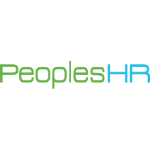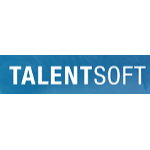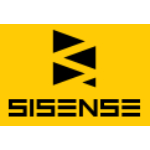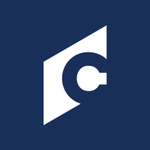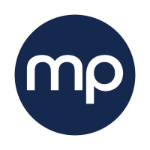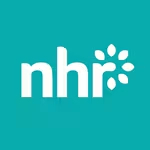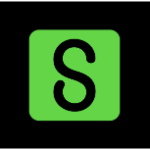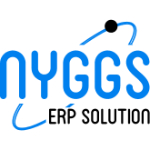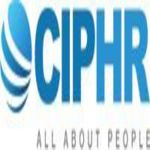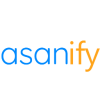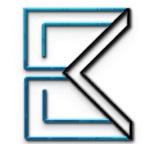TechnologyCounter provides genuine, unbiased real user reviews to help buyers make informed decisions. We may earn a referral fee when you purchase through our links, at no extra cost to you.
List of 15 Best HR Analytics Software
Showing 1 - 15 of 57 productsPeoplesHR is a is a software solution that revolutionizes the way organizations manage their human resources. Designed with the modern workforce in mind, PeoplesHR provides an intuitive and user-friendly platform for all HR operations, from recruitme...Read PeoplesHR Reviews
Papaya Global is an innovative global payroll and workforce management platform that simplifies and streamlines the complexities of managing a global workforce. With an intuitive and user-friendly interface, Papaya Global offers businesses of all siz...Read Papaya Global Reviews
Talentsoft is a leading human resource management software that helps businesses around the world manage and optimize their talent. With a suite of powerful tools and user-friendly interface, Talentsoft streamlines recruitment, performance evaluation...Read Talentsoft Reviews
datapine is a data analysis and visualization software designed to help businesses make data-driven decisions. With its user-friendly interface and robust features, datapine makes it easy for companies of all sizes to analyze and understand their dat...Read datapine Reviews
Sisense is a data analytics platform that empowers businesses to make data-driven decisions. Designed with user-friendliness in mind, Sisense allows companies to easily access, analyze, and visualize complex data. With its advanced technology and fle...Read Sisense Reviews
Cornerstone HR is a leading human resources software that is revolutionizing the way organizations manage their workforce. With a user-friendly interface features, this software streamlines recruitment, onboarding, performance management, and more. I...Read Cornerstone HR Reviews
Moorepayhr is a leading HR and payroll software solution designed to streamline the day-to-day processes of your business. With its user-friendly interface features, Moorepayhr is the ideal solution for managing your workforce, from recruitment and o...Read Moorepayhr Reviews
Natural HR is a dynamic and innovative software designed to streamline human resource management processes. With user-friendly features is a tools, this system helps businesses effectively manage their employees while promoting a positive work cultur...Read Natural HR Reviews
Roubler is a HR and payroll software designed to streamline all your workforce management needs. With its user-friendly interface technology, Roubler simplifies all aspects of HR, from recruitment and onboarding to scheduling and payroll. Say goodbye...Read Roubler Reviews
SAP SuccessFactors a leading cloud-based human resource management software. Developed by SAP, this software offers an efficient and streamlined approach to manage HR tasks such as performance management, learning and development, and recruiting. Wit...Read SAP SuccessFactors Reviews
Sage HR, a powerful is a HR management software that simplifies and streamlines all aspects of the human resources process. With its user-friendly interface features, Sage HR revolutionizes the way companies handle employee data, payroll, performance...Read Sage HR Reviews
NYGGS HRMS, a flexible is a software designed to streamline all human resource management processes. With its user-friendly interface features, NYGGS HRMS offers a convenient solution for businesses of all sizes. Say goodbye to manual HR tasks and he...Read NYGGS HRMS Reviews
CIPHRis a powerful HR software that revolutionizes the way businesses manage their human resources. With its advanced features and user-friendly interface, CIPHR streamlines processes and boosts efficiency, helping companies of all sizes thrive in a...Read CIPHR Reviews
Asanify is a solution to simplify your tasks and boost your productivity. This innovative software is designed to streamline your work process, save you time and effort, and take your efficiency to the next level. With Asanify, managing your tasks ha...Read Asanify Reviews
EmployeeVibes is a web-based HR management solution helping organizations in digitizing their entire business processes. The software is used for monitoring a variety of distinctive tasks starting from employee onboarding, task scheduling, leave and...Read EmployeeVibes Reviews
- What Is HR Analytics Software?
- Top Reasons Why Businesses Need HR Analytics Software?
- What Are the Top Key Features of HR Analytics Software?
- What Are the Top Benefits of HR Analytics Software?
- What Are the Steps to Choose the Right HR Analytics Software?
- What Are the Types of HR Analytics Software for Different Industries?
- What Are the Technology Trends for Best HR Analytics Software?
- What Are the Deployment Options for HR Analytics Software?
What Is HR Analytics Software?
HR analytics software is a sort of software created for human resource departments to assist them in managing, analysing, and optimising numerous areas of their employee workforce. HR departments utilise it to better understand current trends, analyse historical data, and plan future plans.
The best HR analytics tools, at its heart, assists businesses in measuring and monitoring employee performance, productivity, hours worked, employee turnover, and a variety of other variables. HR departments acquire a better understanding of their staff and may make more educated decisions about workforce management by employing data to gain insights.
HR analytics systems also facilitates the tracking and analysis of data over time. This type of data can be utilised to forecast future trends, uncover resource shortfalls, and, most significantly, identify skill gaps and avenues to progress. In a nutshell, people analytics software is intended to assist HR departments in empowering their staff and making better strategic decisions.
Top Reasons Why Businesses Need HR Analytics Software?
1. Increasing strategic HR focus: The best HR analytics software gives important insights into key performance indicators, allowing HR teams to strategically prioritise projects and activities.
2. Improving organizational performance: Leveraging the data provided by HR analytics systems can assist the organisation in maximising performance and optimising procedures.
3. Optimizing recruitment: Businesses can use the best HR analytics tools to discover trends, create goals, and analyse performance in order to enhance their recruitment tactics.
4. Improving retention: Analysing employee data can help HR understand what motivates employees and assist managers to better manage and retain talent.
5. Enhancing talent management: Accurate analytics can assist HR professionals in better identifying and developing top talent, as well as identifying areas for development.
6. Identifying HR trends: HR professionals can notice trends and recognise patterns in HR data by tracking and analysing it.
7. Improving workforce planning: Analysing employee data enables HR professionals to more effectively foresee workforce changes and plan for them.
8. Enhancing compliance: Organisations can use HR analytics to discover non-compliance concerns and take corrective action.
9. Improving performance management: HR data analysis can aid in the management and evaluation of employee performance.
10. Enhancing communication: Organisations can gain a better understanding of how their employees engage and communicate by analysing employee data.
11. Boosting quality of interviews: HR analytics systems can assist firms in identifying questions and assessment criteria in order to obtain more accurate information from job candidates.
12. Tracking employee progress: The best HR analytics tools can assist in identifying areas for improvement in various elements of an employee's performance management in a timely and accurate manner.
13. Generating insights to inform decision-making: Human resource analytics software can provide insights into numerous processes and activities across the organisation, enabling for better data-driven decision making.
14. Enhancing workforce optimization: The best HR analytics software can assist in identifying inefficiencies and workforce optimization resources for better results.
15. Reducing the costs associated with recruitment and retention: Businesses can decrease expenses by using data to develop and execute better recruitment and retention strategies.
What Are the Top Key Features of HR Analytics Software?
1. Automated Data Collection: Human resource analytics software can automatically acquire and store data from a variety of sources, including as time sheets, attendance records, and employee evaluations. This enables HR departments to generate reports and analyse trends more quickly.
2. Predictive Analytics: This tool enables HR professionals to identify potential areas for improvement and prevent future problems. HR analytics can reveal patterns in recruiting, employee performance and satisfaction, and productivity measures.
3. AI-driven Decisions: By automating procedures such as recruiting and performance evaluations, AI-driven decision making enables HR professionals to make better judgements. Artificial intelligence can also be used to discover potential areas for improvement in hiring and staffing management operations.
4. Talent Management: Human resource analytics software can provide useful insights into the performance of specific individuals and teams. This can help HR departments make better judgments about hiring, developing, and retaining high performers.
5. Recruiting Optimization: HR analytics software can assist HR departments in more efficiently identifying and targeting the relevant people for job opportunities. The software can also help to expedite the recruitment process, making it easier to find qualified candidates.
6. Performance Optimization: The best HR analytics software can assist organizations in identifying underlying issues that may be limiting employee performance by analyzing employee data. A lack of enthusiasm, an inappropriate job assignment, or an overwhelming workload are examples of such issues.
7. Employee Engagement: Employee engagement can also be tracked via HR analytics tools, providing insights into employee happiness and productivity. This can assist HR departments in identifying reasons causing low engagement and making efforts to improve motivation and performance.
8. Reporting: HR analytics software may create detailed data on all aspects of human resources, including recruiting, performance, attendance, and training. These reports can assist organizations in making educated decisions about human resources.
What Are the Top Benefits of HR Analytics Software?
1. Improved recruiting process: HR analytics software assists organizations in identifying potential applicants by analyzing data related to talents, qualifications, and other hiring considerations. This enables businesses to make better-informed judgments when employing new employees.
2. Better employee retention: The best HR analytics software can be used to analyze employee data such as tenure and job satisfaction in order to discover areas for future development that will help keep current employees engaged and productive.
3. Increased team performance: Team dynamics, productivity, and communication can all benefit from the usage of HR analytics tools.
4. Reduced time and resources: HR analytics technologies can help to decrease the time and resources needed to handle employee data while also providing instant insights into important performance indicators.
5. Improved employee engagement: HR analytics software may analyze indicators such as employee engagement and turnover rate to assist businesses in determining what drives their staff and what could be improved.
6. Accurate organizational performance review: HR analytics software enables businesses to track employee performance in real time, identify areas for improvement, and make course changes in real-time.
7. Streamlined decision-making process: The best HR analytics software can assist firms in better understanding past decisions, analyzing current patterns, and identifying potential areas for development in order to make better decisions in the future.
8. Data-driven talent management: Companies can track employee performance, analyze employee data across departments, and find areas for improvement to help develop and retain valued personnel by employing HR analytics.
What Are the Steps to Choose the Right HR Analytics Software?
1. Identify the objectives for HR analytics: Determine the analytical goals of your HR department, such as workforce intelligence, turnover analysis, recruitment success, organisational restructuring, and so on.
2. List out the features: List the elements that HR analytics software must have, such as data visualization, predictive analytics, workforce planning, and so on.
3. Evaluate the software’s features and compatibility: Examine the list of required features and ensure that the program is compatible with the organization's existing system.
4. Assess the cost: Determine fairness in the cost-benefit analysis by assessing the cost of HR analytics systems.
5. System scalability: Examine the system's scalability and make sure it can be expanded or altered to meet future needs.
6. Seamless integration: Check that the HR analytics systems can be integrated seamlessly with the existing system.
7. Consider user reviews: Conduct a user review of existing program users to see what other users think of the software.
8. Support & maintenance: Evaluate the support and maintenance services.
9. Demo & trial: If demo and trial versions are made available to you, test the software.
10. Final decision: Examine the suppliers' pros and cons before making a decision.
What Are the Types of HR Analytics Software for Different Industries?
HR analytics software varies depending on the industries they are used in. Generally, they can be divided into the following 3 categories:
1. Recruiting software: This type of software can assist with sourcing, applicant tracking, streamlining processes, and monitoring hiring performance. It is particularly useful in industries requiring a large workforce, such as hospitality, retail, and transportation.
2. Performance management software: This software aids in the tracking of an employee's goals, performance metrics, and other key performance indicators (KPIs). This type of software is especially useful in fields where individual performance is critical to a company's success, such as banking, healthcare, and information technology.
3. Compensation and benefits software: This sort of software assists in the tracking and management of employee benefits such as health insurance, 401k plans, and other compensation management schemes. It can be extremely beneficial in businesses where competitive compensation is critical to success, such as high-tech and retail.
There is also speciality software for certain businesses such as manufacturing, government contracting, or education. HR analytics software, regardless of business, can be a helpful tool for improving employee performance, recruitment, and remuneration.
What Are the Technology Trends for Best HR Analytics Software?
The technology trends for best HR Analytics Software include:
1. Automation: Automation is the process of streamlining operations by relying on computer technology to do jobs that were previously performed by humans, such as data analysis, record management, and insight generation. For HR analytics, automation can be utilised to automate data collection, processing, and presentation.
2. Artificial Intelligence: Artificial intelligence (AI) has grown in importance as a tool for firms to employ for HR analytics. AI systems can comprehend human behaviour by analysing enormous volumes of data, helping businesses to make more accurate and timely decisions.
3. Predictive Analytics: HR analytics systems are used to forecast an organization's and its workers' future. Predictive analytics is used to spot trends and create models that can use this data to advise decisions.
4. Cloud Computing: The practice of storing and accessing data on remote servers is known as cloud computing. Cloud computing enables enterprises to dramatically reduce IT infrastructure expenditures and access data from any location.
It also makes enormous amounts of data more accessible to organizations, allowing for more accurate and efficient analysis.
What Are the Deployment Options for HR Analytics Software?
HR Analytics Software deployment choices include cloud-based, on-premise, and hybrid methods. A cloud provider hosts cloud-based HR Analytics Software, which is accessed via the Internet. This gives teams access to the software and its functionality without the high prices and big upfront fees associated with traditional on-premise software.
On-premise HR analytics systems necessitate the user's hosting, maintenance, and security of the program, storage, and resources. Companies must ensure the system's security, scalability, and uptime, and the company's network must meet specific requirements before the software can be implemented.
Finally, Hybrid HR Analytics Software includes components of both cloud-based and on-premise software versions. This deployment option allows businesses to get the benefits of cloud platforms, such as scalability and cost savings, while maintaining the control and security of an on-premise solution.
